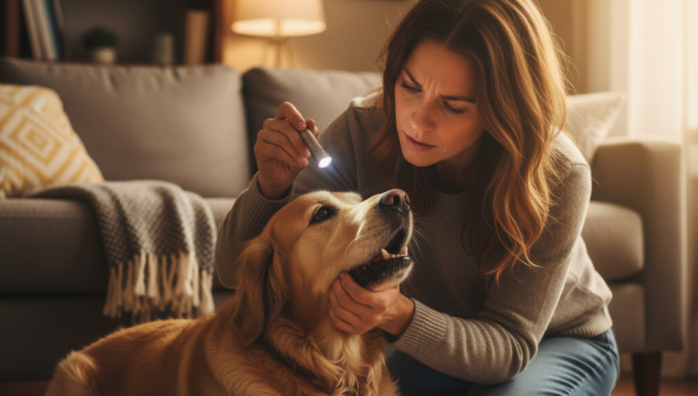Recognizing pet choking emergency signs
by admin in Pet Care Basics 21 - Last Update November 20, 2025

I\'ll never forget the silence. My goofy Golden Retriever, Barnaby, was happily chewing on a new toy when suddenly, the happy crunching stopped. He stood up, a look of pure panic in his eyes, and started pawing frantically at his mouth. No sound came out. That terrifying, silent moment is etched in my memory, and it\'s the reason I’m so passionate about teaching other pet owners what to look for. Choking isn\'t always the dramatic, coughing spectacle we see in movies; often, the most dangerous signs are the quietest.
The obvious (and loud) signs of a partial blockage
When an object only partially blocks the airway, your pet can still move some air. This is a serious emergency, but you\'ll likely have audible clues. From my years working with animals and being a multi-pet owner, these are the signs that immediately get my attention:
- Frantic pawing at the face or mouth: This is a universal sign of distress. They are physically trying to remove what\'s bothering them.
- Gagging or retching: A very distinct, forceful attempt to clear the throat. It can sound wet and distressed.
- Loud, harsh coughing: A powerful, hacking cough is the body\'s natural defense. Let them cough if they can!
- High-pitched noises or wheezing: If you hear a whistling sound when they try to breathe, it means air is struggling to get past an obstruction.
The silent but deadly signs of a full blockage
This is what happened with Barnaby, and it\'s what pet owners fear most. When the airway is completely blocked, your pet can\'t make noise because no air is moving. Time is absolutely critical here. These are the signs of a life-or-death emergency.
What to look for immediately
- No sound: The inability to cough or cry out is the biggest red flag.
- Blue-tinged tongue or gums (cyanosis): Lack of oxygen will cause the normally pink tissues in the mouth to turn a bluish or purplish color. I make a habit of checking my pets\' gum color regularly so I know what\'s normal for them.
- Exaggerated chest movements: You will see their chest and stomach heaving dramatically, but no air is actually going in or out.
- Panic followed by collapse: An animal in this state will be terrified. This can quickly lead to loss of consciousness as oxygen levels drop.
What to do in that moment
Seeing these signs is terrifying, but your calm action can make all the difference. My first instinct was to panic, but I forced myself to take a breath and act. First, restrain your pet safely and open their mouth, pulling the tongue forward to get a clear look. If you can see the object and can easily grab it with your fingers or a pair of pliers without pushing it further down, do so. If you can\'t see it or it\'s lodged too deep, you need to perform first aid, like the Heimlich maneuver for pets, while someone else calls the nearest emergency veterinarian. This information isn\'t a replacement for professional help, and I always, always advise heading straight to the vet, but knowing these signs gives you the power to act fast and save a life.














